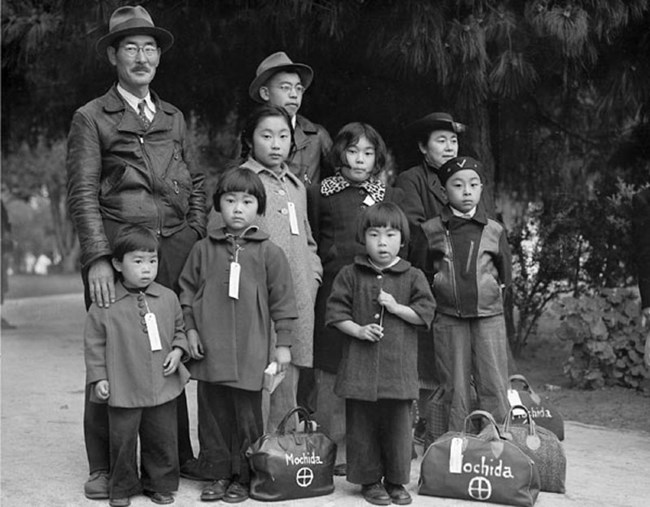
Dorothea Lange for the War Relocation Authority. National Archives and Records Administration. National Archives Identifier 537505
On March 23, 1942, using the authority delegated to him under Executive Order 9066, Western Defense Commander General John L. DeWitt ordered the removal and relocation of all people of Japanese descent living in California, western Oregon, western Washington, and southern Arizona. Approximately 110,000 people, two-thirds of them American citizens, were made to abandon their homes and communities and were forcibly removed to War Relocation Authority confinement sites. In addition, over 2,000 people of Japanese descent living in Hawaii were incarcerated in confinement sites in the Hawaiian islands or sent to mainland confinement sites.
By the end of the war over 120,000 people of Japanese descent had been incarcerated, without trial, in sites across the western United States and Hawaii. It was the single largest forced relocation of people in U.S. history.
Today, the National Park Service preserves multiple WWII confinement sites. To learn more see our Visit World War II Parks page or our Japanese American Confinement subject site.
To learn more about the individual confinement sites and the history of relocation and incarceration during WWII see the National Historic Landmark Theme Study Japanese Confinement in World War II and the National Park Service report Confinement and Ethnicity: An Overview of Japanese American Relocation Sites.
Japanese American Incarceration During World War II
Last updated: April 3, 2024
